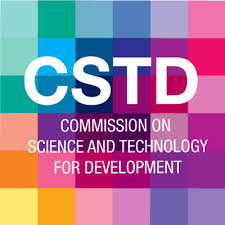As Co-Chair of the Gender Advisory Board, we made the following statements to the to the UN Commission on Science Technology and Development (CSTD)
Caitlin Kraft-Buchman, CEO, Women At The Table
9 April 2025

Review of progress made in the implementation of and follow-up to the outcomes of the World Summit on the Information Society at the regional and international level, in particular WSIS+20 review
Comments on the inclusiveness of the WSIS implementation
Thank you, Chair. Speaking as Co-Chair of the CSTD Gender Advisory Board, I’d like to address comments on the critical need for strengthening gender integration in the WSIS+20 review process.
After 20 years of WSIS implementation, the data still clearly show persistent gender digital divides,with research spanning from ITU to GSMA, UNDP to the World Bank and other international Financial Institutions, ILO, UN Women, UNESCO the IPCC, and others.
ITU statistics indicate women are 15% less likely than men to own mobile phones in low and middle-income countries, and gender gaps in Internet usage exceed 25% in the least developed countries. The GSMA Mobile Gender Gap Report confirms these divides have only marginally improved in the past decade.
Evidence demonstrates that despite WSIS’ foundational commitment to creating an inclusive Information Society, current implementation approaches have failed to deliver meaningful inclusiveness for half the world’s population. “The ‘people-centered and inclusive’ vision articulated in the 2003 WSIS Geneva Declaration of Principles remains unfulfilled
Analysis of the current WSIS framework identifies two fundamental limitations:
First, the current approach to gender integration remains fragmented and inconsistent across action lines. Despite commitments, we lack concrete accountability mechanisms and gender-specific targets within each action line.
Second, without dedicated institutional attention to gender equality, women’s specific digital challenges—from technology-facilitated gender-based violence to algorithmic bias and under-representation in tech leadership—receive insufficient focused attention.
Gender-neutral approaches are not truly neutral – they implicitly uphold existing power imbalances by failing to recognize and address the structural barriers that women face in accessing, using, and shaping digital technologies.
We recommend a dual approach to transform WSIS from gender-neutral to gender-transformative:
One — systematic gender mainstreaming across all existing action lines through:
Mandatory gender impact assessments for all digital initiatives
Gender-specific targets and indicators for each action line
Designated gender focal points with decision-making authority
Gender-responsive budgeting for all WSIS implementation
2. Two—the crucial establishment of a dedicated Gender Action Line — one that sets concrete commitments and enables coordinated action across sectors and agencies. This follows the precedent of the SDGs, where SDG 5 exists both as a standalone goal and as a transversal commitment. And the Global Digital Compact which establishes the same commitment. The same logic should apply here. Without a specific Gender Action Line, we risk continued fragmentation and invisibility.
A standalone Action Line would:
Make gender equality a clear system-level objective,
Enable tracking and resourcing of commitments, and
Provide a platform for innovation and accountability.
Gender equality is not a sectoral issue. It is a structural one — and one that is fundamental to how we design digital futures.
The costs of inaction are significant. Without structural changes to the WSIS framework, we risk developing technologies that amplify rather than reduce inequalities. Conversely, gender-responsive approaches have demonstrated positive impacts on innovation, economic growth, and sustainable development outcomes.
We encourage the CSTD to incorporate this dual approach in its recommendations for the WSIS+20 review, establishing gender equality as an explicit, non-negotiable requirement for an inclusive Information Society.
Thank you.
